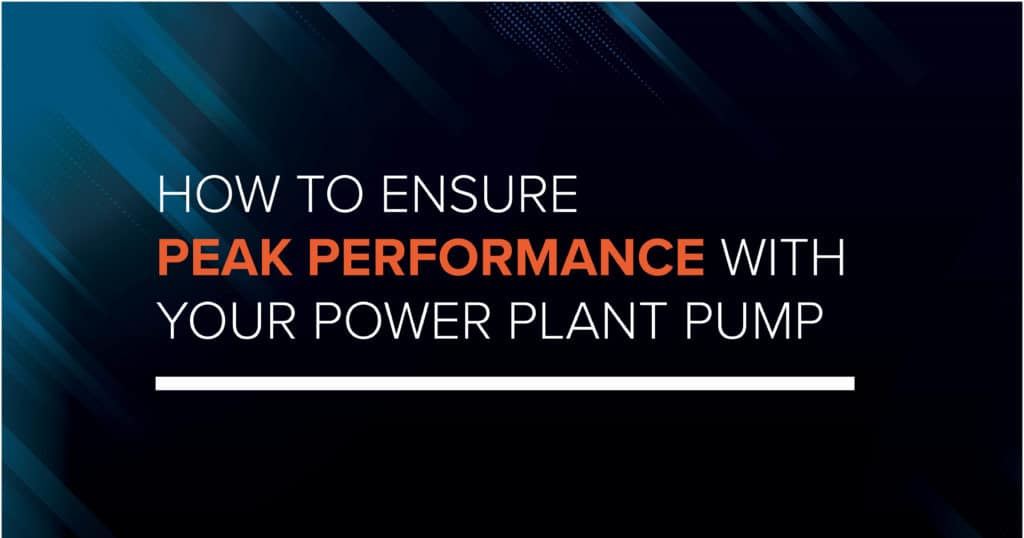Pumps are commonly used at power plants, whether providing primary power or backup energy-generation resources. Throughout the country—and especially here in California—regulations have changed a lot over the years. Yet, many power plants are still operating with pumps that are 30 or 40 years old. They are reliable and operators have been able to adapt them to changing times.
However, it can be devastating when one of these pumps fails at a power plant. They are used in mission-critical applications, and therefore need to be as efficient and reliable as possible. It’s easy for operators to fall into a false sense of confidence with their older pump systems. They’ve been doing their jobs for years, so why fix what isn’t broken? As we all know, pumps only become a major concern when they start to break down and fail. They can turn from an asset into a liability almost overnight!
So, how do you ensure peak performance with a power plant pump? Here are some key steps you should be taking.
- Routine Audits of the Pump System
The first thing that should be in your pump operation plan is a regular audit of the entire pump system. It should be performed at least once a year, if not even more often. In some mission critical applications, this may be a monthly or weekly task (especially with older pump equipment). You should test the flow rates, pressures and temperatures. You want to make sure everything is working as it should. If not, then you need to assess the problems and make the necessary upgrades, repairs or adjustments. - Preventative Maintenance
You also need to have a maintenance plan in place, with the task assignments clear in a detailed maintenance schedule. You should know who is doing the work. You should know which parts need to be cleaned or replaced and when. You should take all the steps to preventatively maintain the equipment to minimize the risk of costly failures and downtime. - Full Disassembly and Cleaning
Part of your maintenance plan may be a periodic disassembly of the entire pump system. Remove all the key parts and clean them thoroughly. Any worn or damaged parts should be replaced before reassembling. Check the pump case, rotating assembly, drive system, brackets, mounts, alignment, gear housing and every other critical component. One or two days of downtime to perform this task will be worth it if it potentially saves you from much bigger headaches down the road. - Don’t Wait on Repairs
If you know something isn’t working right or there is damage somewhere within the pump system, do not procrastinate. Deal with any significant issues as soon as you can. Don’t let minor damage turn into massive equipment failures that will end up costing you a lot more time and money to repair. - Consider a Pump System Upgrade
Even if your pump system has been a reliable workhorse for years (or decades), it still may not be giving you the performance or efficiency you need for peak results. It may be time to upgrade to a newer pump system. - Work with a Pump Expert
Last but not least, you want to align your plant with a pump installation, maintenance and repair expert like DXP Pacific. From pump selection and configuration to ongoing maintenance plans and professional repairs, you can keep your power plant’s pump system running its best for your mission critical applications.
For all your pump needs, contact DXP Pacific today!

